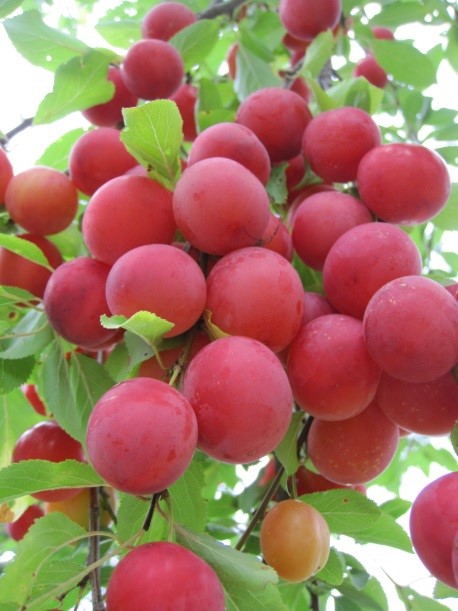The wild cherry plums back on the plate
Wild cherry plums, European crab apple (wild apple) and blackthorn. The wild Danish plants are a hit in the Nordic kitchen, and an actual production based on these plants could offer a renewal in the Danish fruit industry. This is the conclusion in a research project which has resulted in a number of recipes involving the wild raw materials.

Many Danes likes to gather sun-ripened blackberries in the woods or elder flowers to make juice. And with good reason. The wild plants are popular as never before, and both ramson and sea buckthorn have found their way to the menus of many Danish restaurants.
However, harvest of wild plants results in a big and unknown variation in quality of the raw materials. At the same time, issues regarding nature protection should be considered. If we are to avoid ruthless exploitation of nature’s goods – and also use the wild plants, we need to develop an actual cultivation of the wild plants. This will enable preservation and a sustainable use of the plant genetic resources.
This is the reason why scientists from Aarhus University together with a team of chefs and producers of seeds from wild fruit species have studied the possibilities to develop new foods and ingredients based on wild Danish plants.
Senior scientist from Department of Food Science at Aarhus University, Martin Jensen, has lead the project in which especially wild cherry plums (Prunus cerasifera), blackthorn (Prunus spinosa), European crab apple (Malus sylvestris) and wild hazel (Corylus avellana) have been the focus:
- Many of the wild fruits and plants have unique flavours, and for example wild cherry plums were previously widely used in farm households. Today they are only grown on a very limited area, but if it proves possible to establish the wild cherry plums as an actual, new fruit production, they could be a popular renewal in the Danish fruit industry, says Martin Jensen.
Big flavour variation
In Denmark, we have 450 wild plant species, which are categorised as relatives to plant foods or plant feed. However, as there is a wide variation between clones within the individual species of the wild plants, part of the project has aimed at studying the genetic variation and fruit quality. The focus has been to evaluate if the species can offer a certain amount of an edible product, a different/new exiting flavor or a strong background story that can influence the marketing of the food product.
At the same time, the chefs evaluated the flavor of the raw materials.
- We found that wild apples, blackthorn, and cherry plums have the largest potential. Here we talk about characteristic and different species with something new to offer. However, the flavour varies markedly between the clones of the same fruit species, and therefore much can be gained from selecting the clones of most interest and with the largest potential for use in the kitchen, says Martin Jensen.
This is how you can use the wild fruits
As part of the project, the chefs at the restaurant BetaBeta in Aarhus have developed a number of recipes and descriptions of how to use the wild plants – e.g. to produce a cherry plum vermouth, a sport gel with blackthorn flavor or marzipan with wild apple.
According to both scientists and chefs, the wild plants possess a large potential.
- If the selected clones are cultivated without irrigation, use of pesticides, fertilization, and minimal or no weeding, the consumers may accept the products as sustainable, ‘cultivated wild fruits’. A production on an industrial scale with full, normal cultivation in an orchard should also have marketing potential as a novelty, especially on the juice and fruit wine market. A potential for a wide product diversity has been demonstrated here, says Martin Jensen.
Further information
About the project
The project is carried out in collaboration between Department of Food Science, Aarhus University, Restaurant BETABETA, Dyrelund (seed orchard) and the Danish Nature Agency Nordsjælland. The project was funded by the Ministry of Food, Agriculture and Fisheries’ (now Ministry of Environment and Food) programme for ‘Demonstration, conservation and sustainable use of plant genetic resources inagriculture and foodunder EU's Rural developement programme’.
Contact
Senior Scientist Martin Jensen
Department of Food Science, AU
Mail: martin.jensen@food.au.dk
Tel.: +45 8715 8331
Mobile: +45 4059 4286
